Why are there holes on strawberry leaves and what to do?
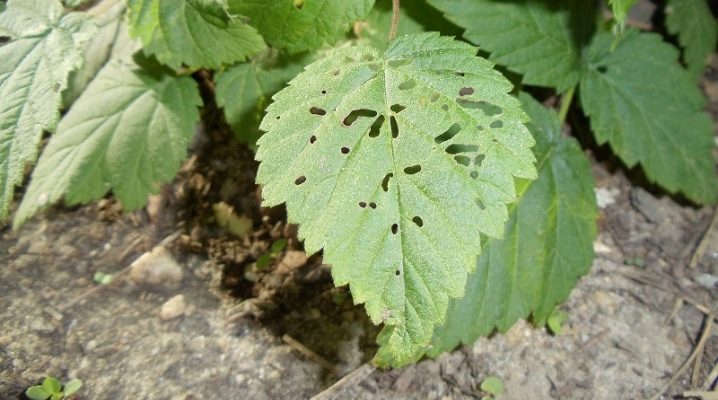
Holes in the leaves of strawberries are a common occurrence, which indicates that the plant is either sick or has been precipitated by parasites. What to do with this, we will tell you in this article.
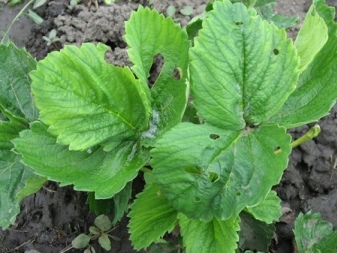
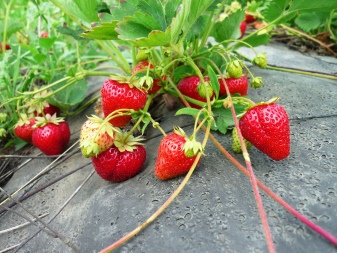
Potential pests
There are many pests that cause strawberry leaves to be eaten, as evidenced by the numerous holes. The most frequent visitor to the strawberry garden is the raspberry-strawberry weevil. This is a small insect whose size usually does not exceed 3 millimeters. He actively feeds on leaves, flowers and buds of not only strawberries, but also raspberries, blackberries and strawberries. The female of such a parasite is able to lay about 50 eggs per season, as a result of which small bugs appear that actively gnaw on strawberry leaves, because of them holes are formed.
Such a harmful insect is capable of completely depriving you of the strawberry harvest, and therefore it is necessary to fight it. This can be done with the help of folk remedies, but if the parasites managed to breed, then it is better to resort to chemical or biological means, among which the most popular are "Karate", "Fitoverm", "Cesar" and "Corsair".
The nettle weevil is another pest that eats strawberry foliage. It is a bright green bug measuring 1 centimeter. This insect eats young leaves with pleasure at the edges, and also reproduces very actively. Note that the larvae also harm the plant, moreover, serious harm, because they eat up its roots. To fight this parasite, it is necessary in the spring and after fruiting to loosen the soil with strawberry bushes, and also to process young strawberries until the buds form with a solution of "Karbofos" with a concentration of 2-3%.
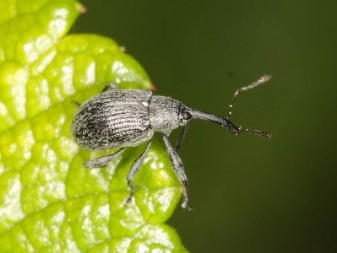

Another common pest is the strawberry leaf beetle. This is a small insect up to 4 millimeters in size, which can cause great harm to strawberry bushes due to its gluttony. This harmful insect eats foliage, destroying almost the entire leaf blade, leaving behind only a film and veins. At the same time, this creature reproduces very actively: one female is able to lay about 200 eggs in just one month. To fight this parasite, you can use its natural enemies, for example, predatory bugs and ground beetles, tobacco dust or chemicals. It is worth resorting to the help of the latter only if the insects have managed to seriously infect the plant.
Often strawberry bushes are also precipitated by strawberry leafworm. It is a small reddish butterfly. By itself, it is harmless, which cannot be said about its caterpillars - it is they who cause the greatest damage to strawberry bushes. At first, they eat the lower leaves, and then, having matured, they switch to others. Parasites gnaw through the plates of the leaves, fold them and glue them together with cobwebs.
To fight this parasite, it is first of all necessary to remove the old foliage, under which harmful insects often hibernate, and also to treat the plant with "Karbofos" and "Phosbecid".
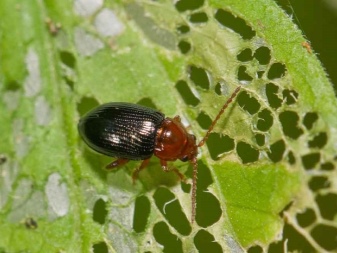
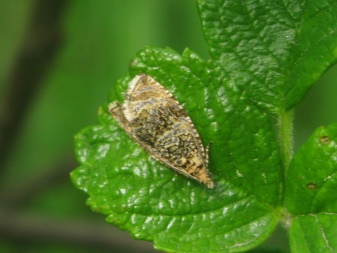
Diseases and their treatment
One of the most common diseases causing holes in strawberries is anthracnose... This is a fungus that actively develops in warmth and high humidity, which is capable of infecting the entire plant. At first, it causes brownish markings that resemble burns or sores, which subsequently dry up and begin to crack, which leads to the destruction of the leaf plate.If you start the disease, then later you can lose the entire strawberry harvest. It is better to fight this disease in the early stages. To do this, it is necessary to remove the affected parts of the bush in time, water it exclusively at the root and immediately begin to apply fungicidal preparations.
Brown spot is another frequent visitor to strawberry beds. The disease, as a rule, becomes more active in the second half of summer, during periods of high rainfall and at low temperatures. This is a fungal disease that causes red spots on strawberry leaves that turn brown over time. Subsequently, these spots dry out, and holes form in these places. This disease can significantly reduce the strawberry yield and weaken the bush, which will be especially noticeable next year.
They fight this disease very radically, by uprooting the bush with its subsequent burning - this is necessary so that the disease does not spread to healthy plants. Further, healthy bushes are sprayed with Bordeaux liquid with a concentration of 1%, watering and the amount of nitrogen fertilizers are reduced. For prophylactic purposes, after harvesting, the plant can be treated with "Fitosporin".
Ramulariasis is another fungal disease that spreads regardless of factors such as temperature and humidity, but it especially loves sunlight. The disease causes the appearance of small brown spots, which increase over time, and their core begins to turn white and decay, which is why holes form on the leaf blade. Subsequently, the diseased leaf begins to fade and dies off. They fight this plant as follows: the old foliage is removed, and the bushes are sprayed with anti-fungus agents, which contain copper, as well as Bordeaux liquid with a concentration of 3%.
Another disease that can cause holes in strawberry leaves is white spot. It can begin to develop in spring, spreading to young plants and peduncles, which is fraught with their death. In order to prevent the onset of the disease, it is necessary to eliminate the old foliage, and also to arrange in the spring the treatment of the plant with Bordeaux liquid of 1% concentration.
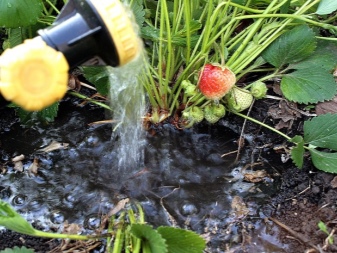
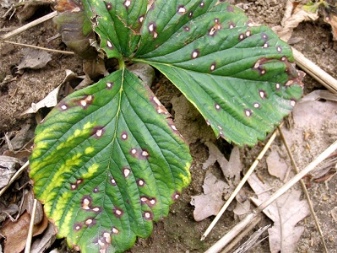
Prevention measures
Preventive measures can help you avoid many problems and grow a healthy and tasty crop. To begin with, you need to regularly examine strawberries in order to notice parasites or symptoms of the disease in time. Don't forget about quality care. Good watering, preventive treatment with folk and special means, as well as feeding are necessary for strawberries, without them the plant will be weak and will not be able to withstand the attacks of parasites or diseases for a long time. It is worth paying attention to cleaning old foliage, because harmful insects or fungal spores can hide under it, which can easily survive the winter and begin to precipitate plants for the next season.
Do not forget about airing the premises when it comes to strawberries that are grown in greenhouse conditions. Without ventilation, the greenhouse will be too warm, coupled with a high level of humidity, this can provoke the development of a fungus.
Pay attention to cleaning weeds, because it is they who are most often the distributors of parasitic insects and fungus. Don't forget about your garden tools. Disinfect it regularly so that you do not accidentally transfer the infection from a diseased plant to a healthy one.
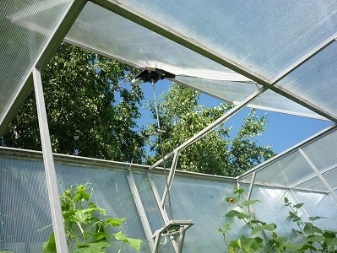
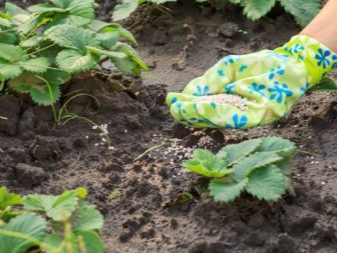













The comment was sent successfully.